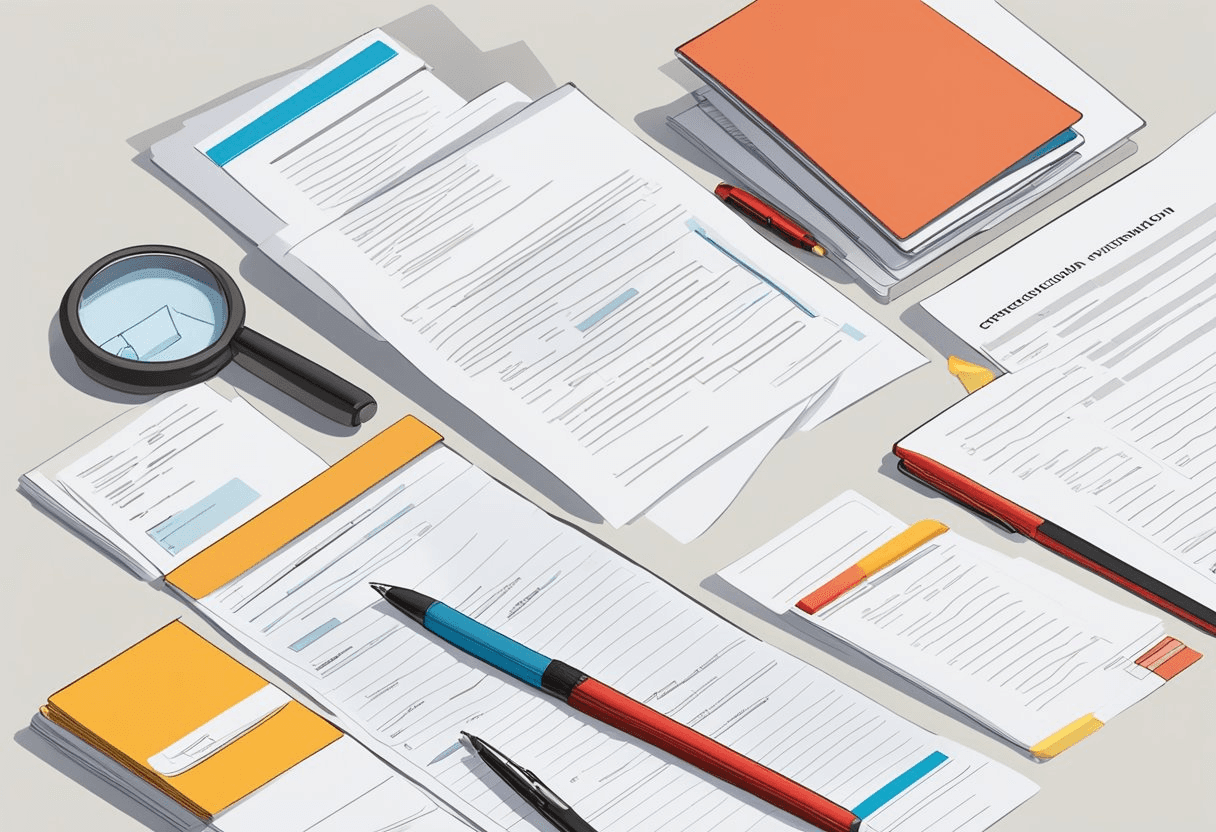Glossary: HR & Recruiting Definitions
Mastering the Cover Letter: Essential Insights for HR Professionals to Evaluate Applicants Efficiently
Mastering the cover letter is a quintessential skill for HR professionals, who understand its pivotal role in the recruitment process. These introductory documents provide candidates with an opportunity to connect their skills and experiences to the needs of the job, going beyond the limitations of a resume. For HR professionals, evaluating cover letters effectively is crucial, as they often offer the first glimpse into a candidate's suitability for a role. Effective cover letters can reveal much about a potential employee's communication abilities, attention to detail, and cultural fit.

In the realm of talent acquisition and management, cover letters are not just formalities but strategic tools that can attract top talent. A well-crafted cover letter offers insights into an individual's personality and professional ethos, elements that are not readily apparent in the more structured format of a resume. HR professionals benefit from honing their ability to discern the nuances within cover letters, which can inform subsequent decision-making in the hiring process.
The art of assessing cover letters demands a balance between a systematic approach and a keen awareness of individuality. HR professionals must read between the lines to identify candidates who have not only addressed the job requirements but have also demonstrated a compelling reason for their interest in the organization. Effective cover letters can function as the bridge between a candidate's capacity and the company's culture, a gap only discernible by a discerning HR eye.
Crafting a Compelling HR Cover Letter

A well-crafted HR cover letter showcases your professionalism and HR expertise. It must be both clear and convincing to convey your qualifications effectively to a potential employer.
Understanding the Basics
Before writing, understand that a cover letter is a professional document accompanying your resume. It should reflect your communication skills and attention to detail. Always send the cover letter as a PDF to maintain proper formatting and remember to keep it to one page. Margins should typically be set to 1" to 1.5" to create a balanced and professional look.
Structuring Your Cover Letter
Header: Include your full name, contact information, and the date at the top of the letter.
Opening Paragraph: Capture the hiring manager's attention with a strong opening that relates to the job description. Be concise and mention how your values align with the company's mission.
Body of the Letter: Use this section to detail your relevant skills and experience, making sure to highlight key achievements. Tailor the content to demonstrate your knowledge of the company and HR skills.
Closing Paragraph: Reemphasize your passion for the role and why you are an ideal fit based on the job description. Close with a call to action, inviting the hiring manager to contact you for a cover letter review or interview.
Showcasing Your HR Skills and Qualifications
In the body, utilize bullet points to list qualifications and accomplishments, ensuring each point aligns with the job requirements. Mention any notable leadership experiences and how your interpersonal skills have positively impacted past HR roles. Provide examples that showcase your communication skills and ability to handle complex HR tasks with attention to detail.
Personalizing Your Application
A personalized letter shows the employer you are genuinely interested. Research the company and refer to specific aspects of its culture or projects that excite you. Use keywords from the job description to make clear connections between your experience and the role you're applying for. Address the letter to the hiring manager by name whenever possible to add a personal touch.
Advancing Through the Recruitment Process

Mastering the cover letter is a strategic element for HR professionals to enhance the recruitment process, ensuring candidates match the organizational ethos and increase the efficacy of talent acquisition. The cover letter serves as a pivotal communication tool and, when leveraged correctly, can significantly influence the hiring outcome.
Effective Communication With Hiring Managers
Strong communication between HR professionals and hiring managers is pivotal to identifying the right candidate. A human resources cover letter should clearly articulate an applicant’s suitability for the position, incorporating key achievements and relevant soft skills. Employing a cover letter review process ensures that the communication between the candidate and hiring management is effective, encapsulating enthusiasm and personality alongside professional qualifications.
Aligning With the Organization's Mission and Values
HR professionals recognize that successful recruitment depends on the alignment between a candidate's values and those of the organization. Human resources cover letter examples often highlight an individual’s interest in the role and his or her understanding of the organization’s mission. This alignment suggests not only a strategic fit for the role but also promises better employee retention and engagement in the long term.
Optimizing for HR Recruitment Systems
In today's digital recruitment landscape, applicant tracking systems (ATS) are commonly used to streamline the hiring process. HR professionals must advise candidates to tailor their cover letters with concise content, utilizing bullet points and keywords that resonate with the job description. The format and clarity of a cover letter are essential, as a well-structured letter with a clear header, contact information, and call to action enhances readability for both the ATS and the HR manager reviewing the application.
Frequently Asked Questions

In identifying the essentials of a cover letter, HR professionals should focus on what includes, expert recommendations, main elements, the significance in the recruitment process, tailoring strategies, and common pitfalls.
What should a HR cover letter include?
A HR cover letter should include contact information, a brief introduction, body paragraphs linking the applicant's qualifications with the job requirements, and a formal closing statement.
What are the 8 things experts say should be in a good cover letter?
Experts recommend a good cover letter to contain a personalized greeting, clear and specific examples of relevant experience, demonstrated knowledge of the company, straightforward language, a call to action, appropriate qualifications, quantifiable achievements, and a professional tone.
What are the 3 main things needed in a cover letter?
The three main items necessary in a cover letter are an engaging introduction, evidence of suitability for the role, and a compelling conclusion with a call to action.
Does HR care about cover letters?
Indeed, HR professionals value cover letters as they provide a deeper insight into an applicant's personality, motivation, and cultural fit, as compared to a resume alone.
How can HR professionals tailor a cover letter to stand out in the recruitment process?
HR professionals can tailor a cover letter by focusing on the job description, using relevant keywords to pass Applicant Tracking Systems (ATS), and emphasizing unique experiences or perspectives that align with the company's values and needs.
What common mistakes should HR professionals avoid when writing their cover letters?
HR professionals should avoid overly generic statements, neglecting to customize the content for each application, lengthy narratives, and failing to proofread for grammar and spelling errors.
Elevate hiring for you and candidates
Starting your recruitment journey? Cooper ensures that your job listings reach candidates across all relevant channels
Already have an account?
Candidate sourcing refers to the process of identifying, attracting, and engaging potential candidates for current or future job openings.
Explore the critical role of optimized career sites in HR with this detailed guide. Learn how to enhance employer branding, attract top talent, and streamline recruitment through effective career site strategies and digital innovations.
Delve into the essentials of building and nurturing a positive company culture with this in-depth HR guide. Discover strategies for enhancing employee engagement, aligning values, and the significant impact of culture on organizational success and brand identity.
Constructive feedback is an essential skill for recruiters. It not only shapes a positive recruitment experience but also reinforces the employer's brand and fosters a culture of open communication.
Cost of vacancy refers to the financial losses incurred by an organization due to unfilled positions. This includes lost productivity, increased workload for other employees, and potential lost business opportunities.
